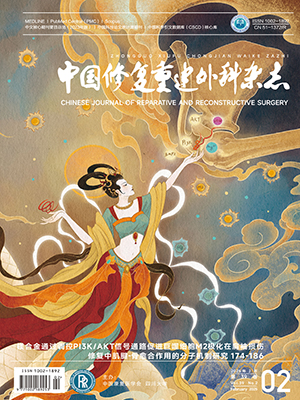Objective To investigate the feasibility oftissue engineered intervertebral disc for regeneration of discs. Methods A three-dimensional porous poly(L-lactic-co-glycolic acid) (PLGA) scaffold was fabricated by temperature induced phase separation method. Human fetal disc cells were isolated and cultured in vitro. The disc cells labeledwith a PKH-26 fluorescent dye were seeded into a threedimensional porous scaffold. The proliferation of disc cells with PKH-26 fluorescent labels was assessed by using MTT uptake, laser fluorescence microscopy and SEM. Results Human fetal disc cells displayed a polygonal shape in primary monolayer culture. A regular arrangement and microtubules orientationstructure scaffold with 50-300 μm in diameter was fabricated by thermal-induced phase separation technique. MTT uptake and fluorescent microscopy examination indicated that the seeded disc cells were viable and showed proliferation activity within a porous scaffold. Conclusion The above findings support potential applications of tissue engineered disc in treatment of disc degenerative diseases.
Citation: Z HANG Chao,RUAN Dike,ZHANG Rongfeng,et al.. N VITRO STUDIES ON TISSUE ENGINEERED INTERVERTEBRAL DISC. Chinese Journal of Reparative and Reconstructive Surgery, 2007, 21(5): 478-481. doi: Copy
Copyright © the editorial department of Chinese Journal of Reparative and Reconstructive Surgery of West China Medical Publisher. All rights reserved




